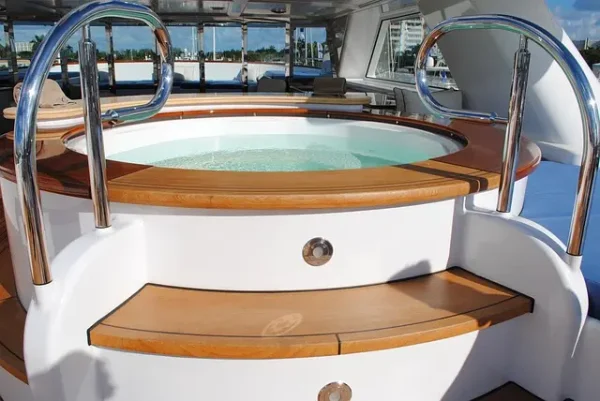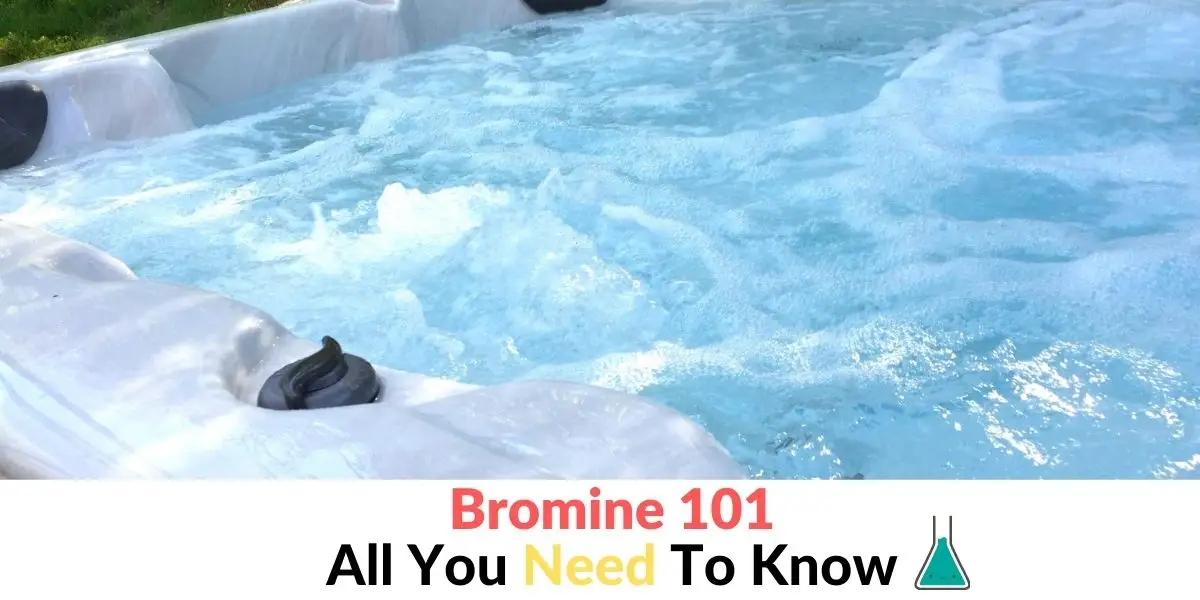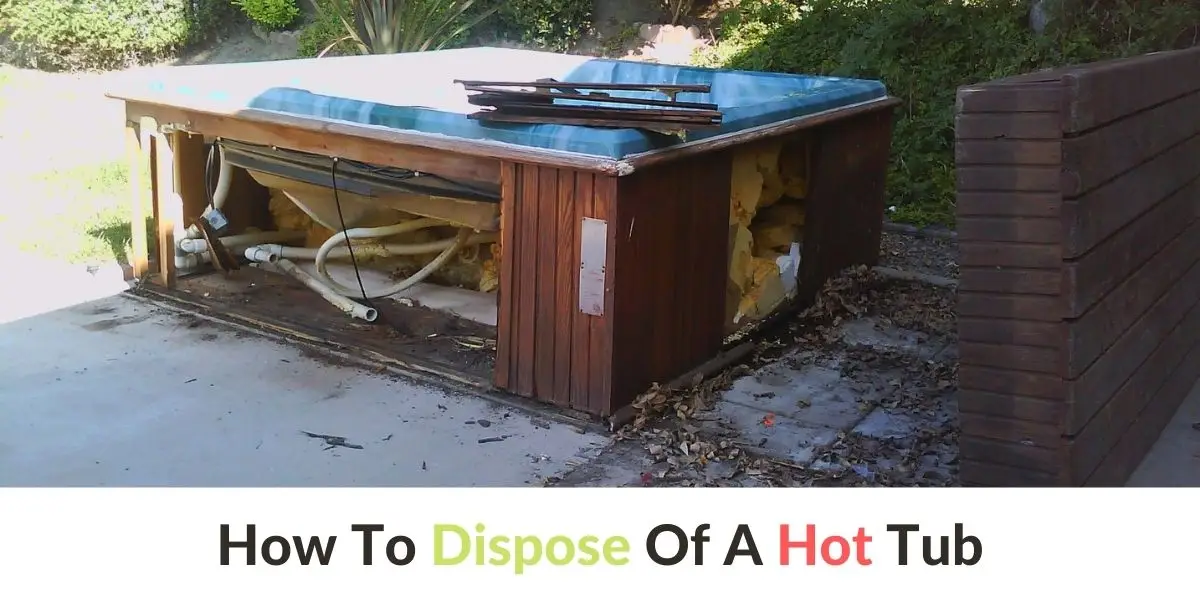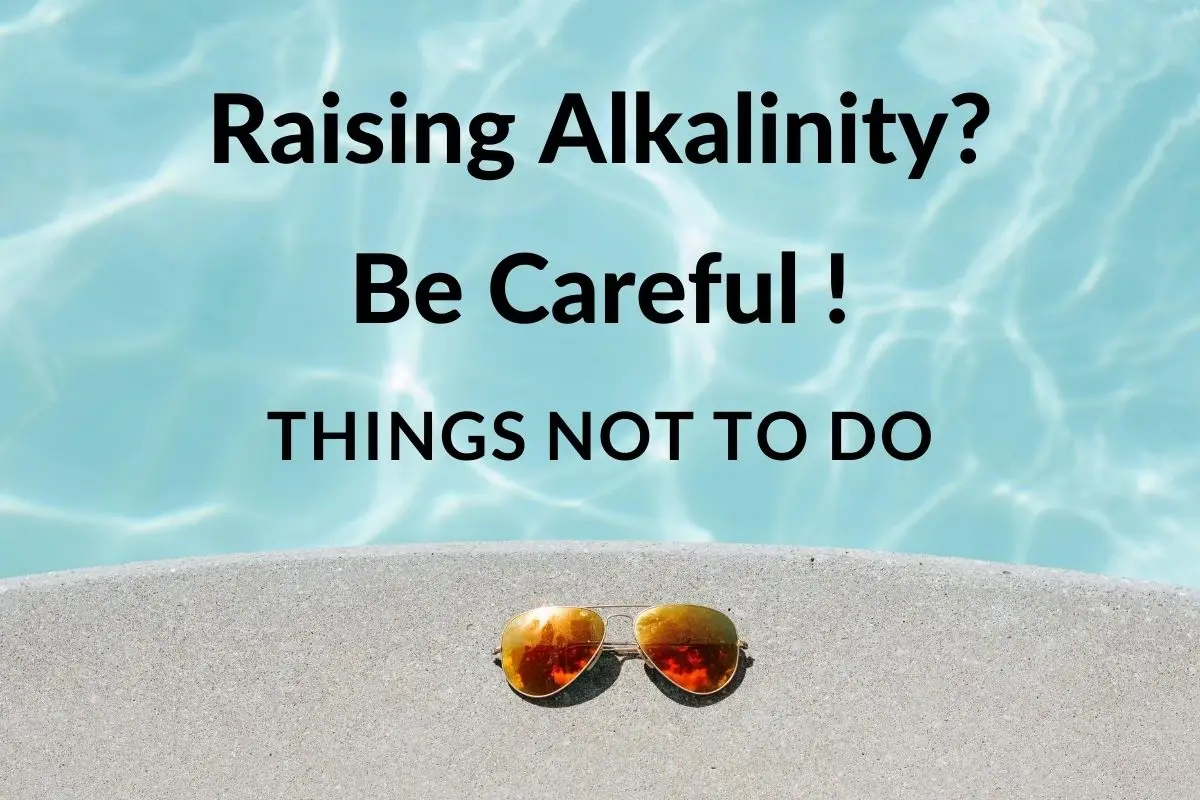How Long Does a Hot Tub Heater Last? [5 Years]
With correct, careful maintenance and regular check-ups, hot tub heaters have a surprisingly long period of proper working. The average lifespan for a hot tub heater is approximately five years.
Proper maintenance of hot tub heaters includes regular, monthly checks performed by the hot tub dealer or someone else who is a professional in this field. The integrity of hot tub heating elements is most commonly tested by an Ohm Meter. It is an electrical device that is made to measure electrical resistance on different components of systems powered by electricity.
To test a hot tub heater, you would need to set the Ohm Meter at its lowest setting, measuring the two hot tub heater terminals. Then, the results obtained by the measuring are compared to find out if they are within an appropriate range. The acceptable resistance range for most heaters is set to somewhere between 9-12Ω (ohms), although some may be as high as 20Ω (ohms).
Another important thing when it comes to hot tub heaters is the water chemistry inside the hot tub. For the hot tub heater to function properly, it requires good water balance, which implies the right mixture of antibacterial chemicals (such as bromine or chlorine) and freshwater. Keeping the heater turned on regularly will also contribute to its longevity. Finally, it is crucial to remember that the number one reason for hot tub heaters’ malfunction is poor water chemistry, so this is the part of hot tub maintenance to watch out for.
Along with hot tub heaters, hot tubs usually have electrical breakers installed as well. These breakers are designed as a system fail-safe because they can pick up any faults when the hot tub heaters are on. In addition, the breakers have a trigger installed to automatically shut down the whole unit if they pick up any activity from the heaters that are not within the provided parameters.
How do you Know if your Hot Tub Heater is Bad?
The primary and most certain way to know that the hot tub heater is gone bad and not working properly is by monitoring the electrical breakers, which will pick up any malfunctions while the hot tub heaters are turned on.
Electrical breakers have a trigger installed that shuts down the entire unit if the hot tub heater isn’t working within the proper parameters, and they are used as a safety measure in this case. However, if the hot tub owner is skeptical regarding the breakers, it is possible to perform tests on the electrical breakers. For example, if a hot tub owner wants to make sure that a malfunctioning hot tub heater tripped the breakers, it is possible to disconnect the copper wires (sometimes referred to as tabs) from the hot tub pack to the hot tub heater element. To continue with the test, it is required to turn the power back on, and if the breaker stays turned on, it is definite that the hot tub heater was the source of the issue.
Some of the conditions that cause the hot tub heater to malfunction, besides the ones already mentioned, are insufficient airflow in the element compartment and a power surge. Insufficient airflow within the hot tub heater is also known as “dry fire.” The term is derived from conditions that occur during this situation. Usually, it means that there is not enough air (or no air at all) flowing through the hot tub heater. This issue can arise if the hot tub heater is turned on while there is very little or no water inside the hot tub. A power surge can also cause other issues, such as safety devices, breakers, for example, to fail.

Should I Leave my Hot Tub Heater on All the Time?
Although this may come as a surprise to most, hot tubs are generally designed to work all day, so keeping the heater on all the time is recommended.
This fact has been confirmed by numerous hot tub owners and should be considered a conclusion derived firsthand. This is especially recommended for hot tub users who often use their beloved source of relaxation at least three times a week. The proper way of doing this is to set the hot tub heater temperature within the range of 25°C to 35°C while not being used. The ideal recommended temperature for the hot tub heater to be set while the hot tub is not in use is 30°C. Increasing the temperature before using the hot tub up to 40°C should be quite an enjoyable experience.
However, keeping the hot tub heater on at all times is not quite possible because hot tubs do require regular maintenance. They need to be drained regularly, and hot tub heaters should not be turned on under any circumstances while there is no water inside the hot tub, as it stops the airflow. In turn, this issue can lead to a more serious failure of the hot tub heater that may require replacement. On other occasions, when the hot tub is not being cleaned or drained, experts recommend keeping the hot tub heater running constantly due to the simple fact of being energy efficient. Although a turned-off hot tub heater does not consume energy, more energy can be spent on reheating the hot tub than actually keeping it running the entire time.
With all this being said, the most cost-effective way of running the hot tub is lowering the temperature of the hot tub heater for a degree, or a few. It has been calculated that each degree lower on the hot tub heater decreases the total energy bill by around 10%. This may be a great idea for hot tub owners who like the water to be a bit cooler or for those who live in a naturally hot environment.
How do I Test my Hot Tub Heater?
Testing the hot tub heater is performed by an electrical measuring device called an Ohm Meter. The function of this device is to measure electrical resistance, which represents the resistance of a material to act as a conductor for the flow of electricity.
An Ohm Meter functions by applying flowing electrical current to the component that needs to be tested (in this case, the hot tub heater). The Ohm Meter then measures the results in voltage and uses physics to calculate the resistance measured in ohms. Hot tub heaters are tested so that the Ohm Meter is preset to the lowest setting possible, and measurements are taken from the two points of the hot tub heater’s terminals. The accepted resistance range between the two terminals needs to be within the required range, between 9-12Ω (ohms). Although this range is most commonly used, some hot tub heaters can have a resistance measurement as high as 20Ω (ohms).
Another way to test the hot tub heater is to use a multitester tool, also known as a multimeter. It is also an electronic measuring instrument with several different functions combined into one device, with some of those being the ability to measure voltage and resistance. The multimeter tests the hot tub heater by touching each screw of the heater with a probe. All elements (components) of an electric-powered system have some resistance, so a 10-16 ohms measurement is considered normal. Higher ohm readings are obtained on devices with 3500 watts components and lower ohm readings with components of 5500 watts.
Making sure that the hot tub heater is working correctly and within the prescribed range is an important part of hot tub maintenance as a whole. Hot tub heaters can be replaced if they go bad, malfunction, but this expensive endeavor can easily be avoided by regular checks performed by a professional. Hot tub heaters are an extremely important part of the hot tub experience, and it can be easily ruined if a component of such high value is not working as it should be.
Why do Hot Tub Heaters Fail?
There are several common reasons why hot tub heaters fail or malfunction. Two reasons that stand out are lack of airflow and poor water chemistry.
Poor water chemistry is considered the prime reason for hot tub heaters malfunctioning. With a lack of proper hot tub maintenance, the water inside the hot tub does not have the right chemistry. This, in turn, causes air that needs to be constantly flowing to get stuck or stop it entirely. Using too many chemicals for the water inside the hot tub, such as chlorine or its lighter version – bromine can reduce the airflow by offsetting the balance between needed fresh water and antibacterial chemicals. The opposite situation may cause the same issues to occur. Having too much fresh water and too few antibacterial chemicals that protect from microorganisms that can inhabit the hot tub can also do significant damage to the mentioned airflow inside the hot tub.
The other major reason is the lack of airflow inside the hot tub water and its components. Such lack of airflow, or “dry fire” as it is known, occurs when the water level inside the hot tub is too low, or the hot tub is even empty. When the hot tub heater is turned on in such a situation, it cannot receive the proper amount of air it needs and is bound to malfunction at some point. The lack of airflow can sometimes occur by accident if the hot tub heater is left turned on during the hot tub draining. This is why it is always important to be responsible and use every available tool for assistance if performing the cleaning process yourself. There is always the option of hiring a professional, of course.
Some other reasons can cause the hot tub heater to go bad. These reasons include:
- Dirty filters;
- Closed down – blocked valves or broken ones;
- A clogged impeller;
- Too many jets set at minimum flow;
- An airlock in the system’s plumbing.












